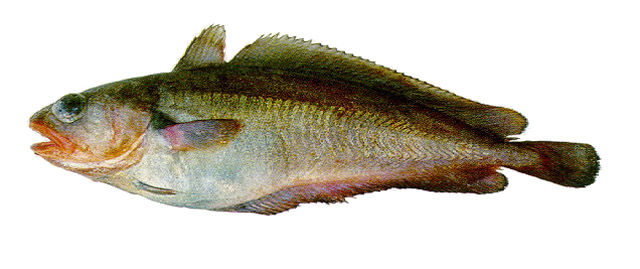| Moridae (Morid cods) |
| 50 cm TL (male/unsexed) |
|
demersal; depth range 30 - 1000 m, oceanodromous |
| Southeast Pacific and Southwest Atlantic: Patagonian region of Chile and Argentina, including the Falkland Islands and the Strait of Magellan. |
|
Dorsal spines (total): 0-0; Dorsal soft rays (total): 59-70; Anal spines: 0-0; Anal soft rays: 54-63; Vertebrae: 52-54. A small variably shaped patch of teeth on head of vomer. Pectoral fin extending beyond anal fin origin. Ventral light organ present. Color uniformly brown; fins dark-edged (Ref. 1371). Caudal fin rounded (Ref. 27363). |
| Highest catches at 235 m. Females attain larger sizes than males. Larger individuals of both sexes move into deeper water. Utilized mainly for fishmeal; can be fried, microwaved and baked (Ref. 9988). |
|
Not Evaluated
(Ref. 96402)
|
| harmless |
|
Most abundant on the Patagonian shelf break at depths 200-300 m (Ref. 43117). Spawning occurs in September and October on the shelf around the Falkland Islands (Ref. 43117). Also Ref. 9988, 27363. |
Source and more info: www.fishbase.org. For personal, classroom, and other internal use only. Not for publication.
Page created by Jen, 05.08.02,
php script by kbanasihan 06/09/2010 ,
last modified by
dsantos, 20/08/10

